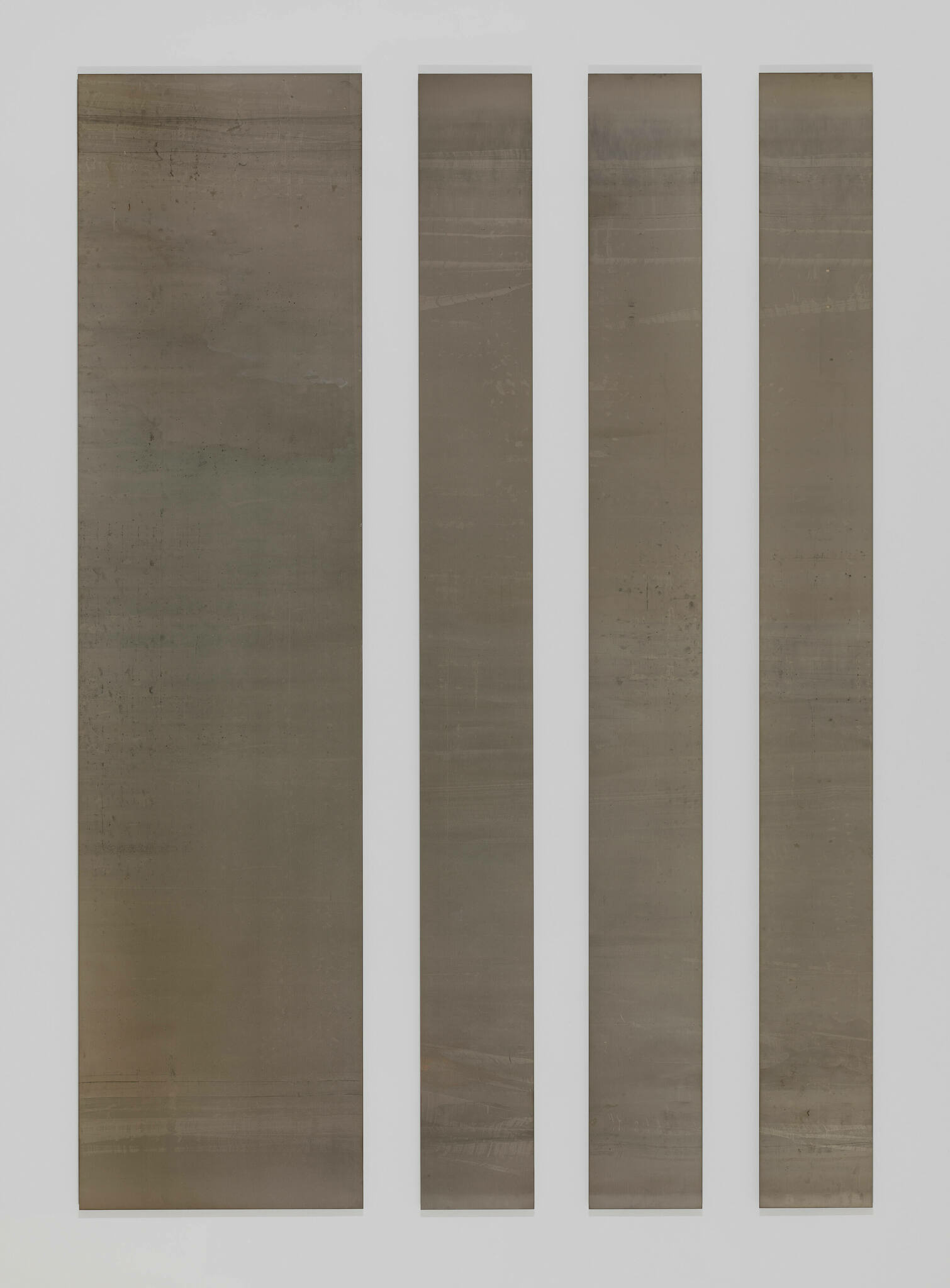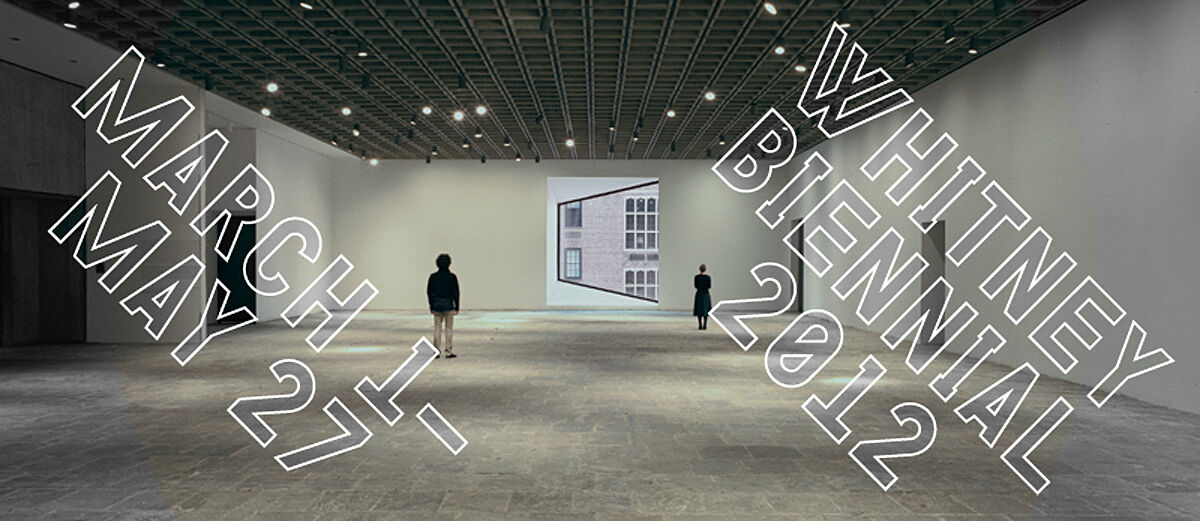Liz Deschenes
Feb 24, 2012
0:00
Liz Deschenes
0:00
Narrator: For the Biennial Liz Deschenes made an installation of photograms, sheets of photographic paper that she exposed directly to light and then developed—never using a camera. Their forms respond to the Museum building itself, which was designed by architect Marcel Breuer and opened in 1966. The building is distinctive because of its stepped façade, which projects outward the higher it goes, and because of its dramatically angled, projecting windows.
Liz Deschenes: The four-panel piece that is a stand-in for the facade will be toned a matte silver surface. The pieces that are stand-ins for the windows are glossy black. The Breuer building shape is a reference for the work, the building's volume and contours reference parts of two distinct cameras, the double lenses of a Rolleiflex and the bellows from a large format view camera.
The building looks like two cameras composited together. It looks like a machine. It doesn't look like a traditional building, the same way I desire the photographs not to look like traditional photographs. The "what is it" is an important part of the investigation.
The two pieces that I'm doing that reference the windows will actually be angled like the way the Breuer windows are angled but reversing the angles. So, the expectations of photography are defied. You don't find a representational image. You find a reflection of the architecture and the spaces where the work is actually installed.


